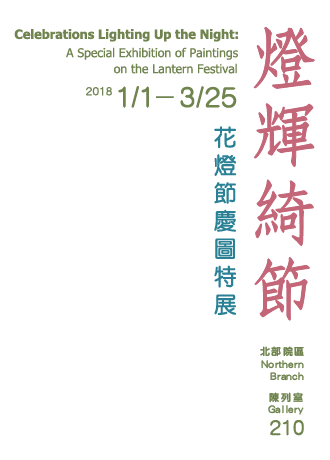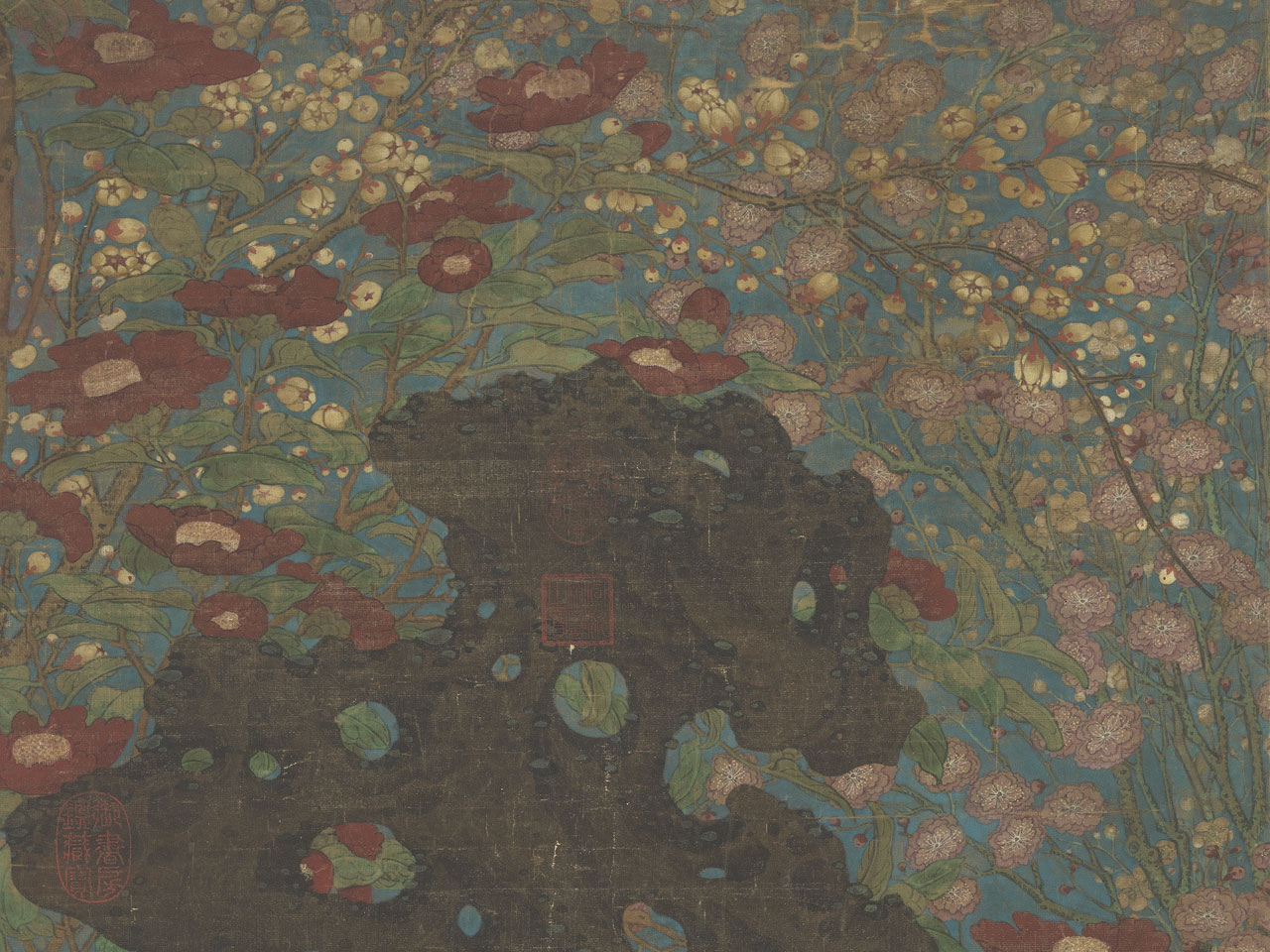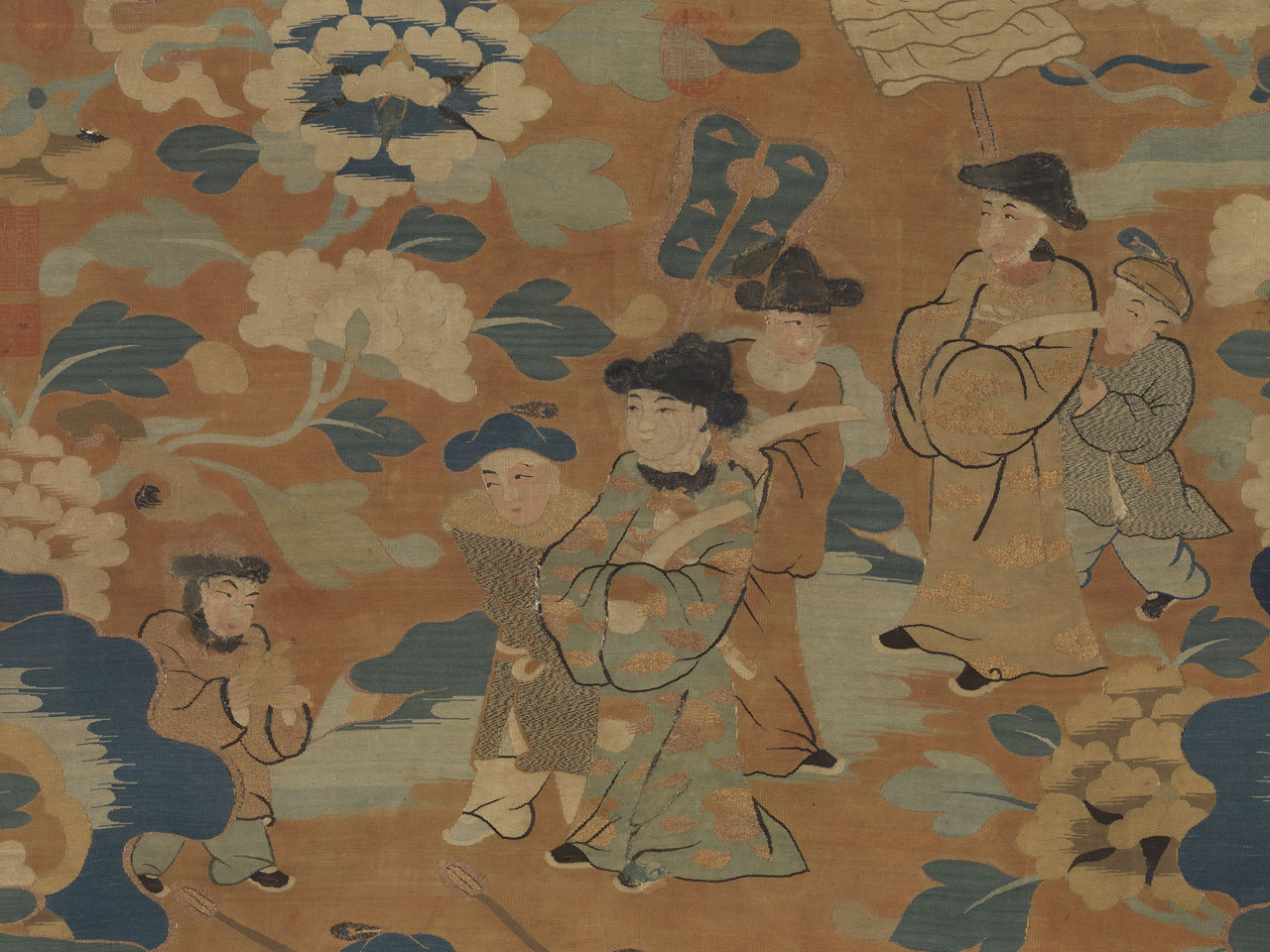Chinese New Year, the first day of the first month in the traditional calendar, represents a new beginning, when all starts anew in the world. Auspicious paintings with titles for New Year's Day often depict floral arrangements with blossoms related to that time of the year, such as camellia, plum, and narcissus, as well as nandina and spirit fungus. Together, they represent the approaching warmth of spring as the first blossoms greet the New Year in a lively and festive atmosphere. There are also depictions of people visiting friends and relatives, children playing in courtyards, and other celebrations of the New Year. Artists over the ages have done other paintings for New Year's Day, including such subjects as the first (brush)stroke of the New Year to bring blessings and auspiciousness for the coming year.
New Year's Day
- Attributed to Zhao Chang (fl. 10-11th c.), Song dynasty
- Hanging scroll, ink and colors on silk, 103.8 x 51.2 cm
This painting includes depictions of plum blossoms, camellias, narcissi, and china roses, which are associated with Chinese New Year. The colors bright and beautiful consist of cinnabar, white, rouge, and mineral green, to which mineral blue was added to fill the background, creating a majestic and opulent scene. The composition is compressed and the scenery lush, the layers piled upwards as the slope and rocks intersect with vegetation to fill the entire surface of the painting. A scene from nature has therefore been transformed into an interesting yet formulaic manner that radiates nonetheless with beauty and a great sense of decoration complementing the auspicious idea behind New Year's Day.
Zhao Chang excelled at flower painting. Every morning he reportedly went out and observed dew-filled scenes to quickly render, from which comes the term "sketching from life." Though this painting has a signature for "Your Servitor Chang," the brushwork and style suggest the hand of a post-Song artist with Zhao's name later added to it.
Silk Tapestry of Children Playing in the New Year
- Attributed as anonymous, Song dynasty (960-1279)
- Hanging scroll, silk, 82.8 x 74.8 cm
Silk tapestry is made using a simple plain-weave wooden loom, in which the warp threads are continuous but not the weft threads. The pattern is first sketched on the warp threads and then colored silk according to the painted draft is loaded on a shuttle and moved back and forth to recreate the image using the weft threads. A saw-tooth gap appears along the edge of the forms, hence the alternate name for tapestry as "cut silk."
This tapestry features a background of red silk with images of peonies and garden rocks filling the surface, the blossoms complex and huge. Ten children are walking among the blossoms at the time of the Chinese New Year as officials and attendants. Play acting as an official entourage, they make for an impressive group paving the way in a manner both interesting and auspicious.



